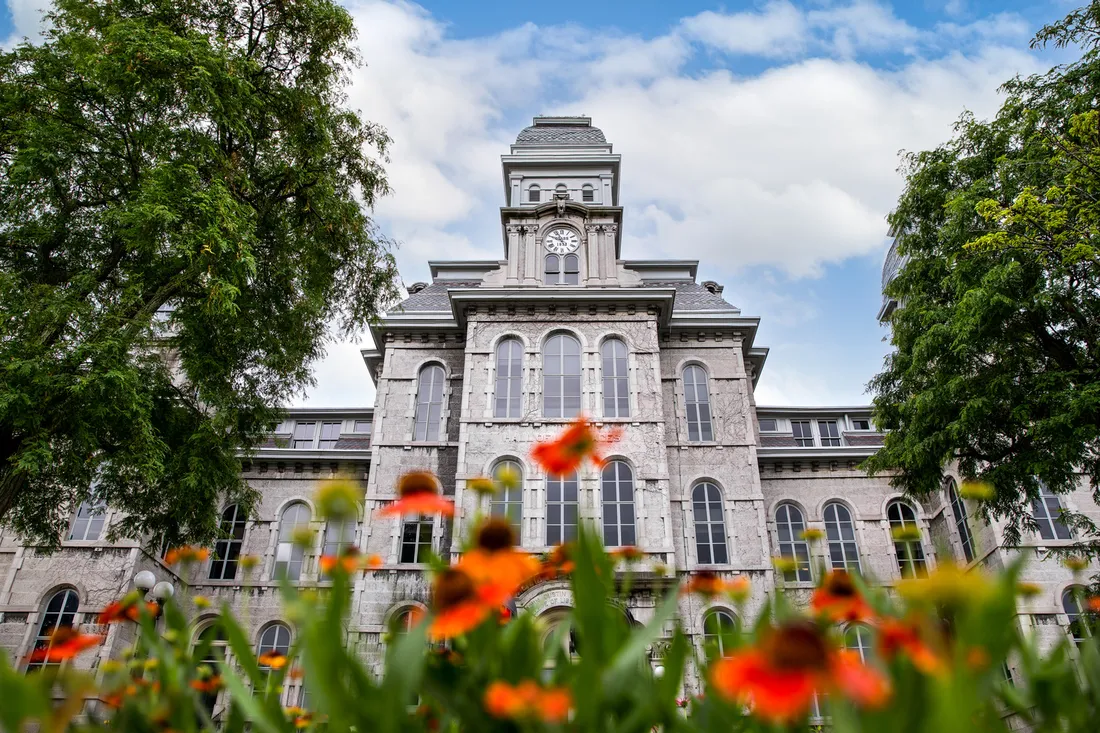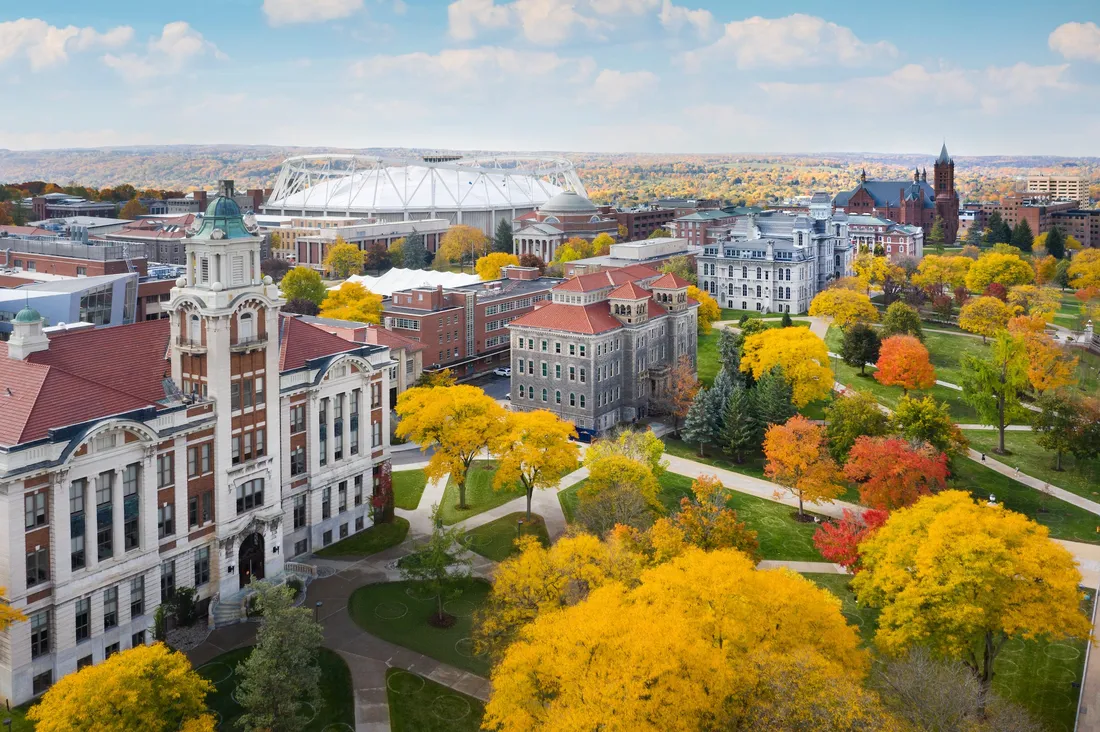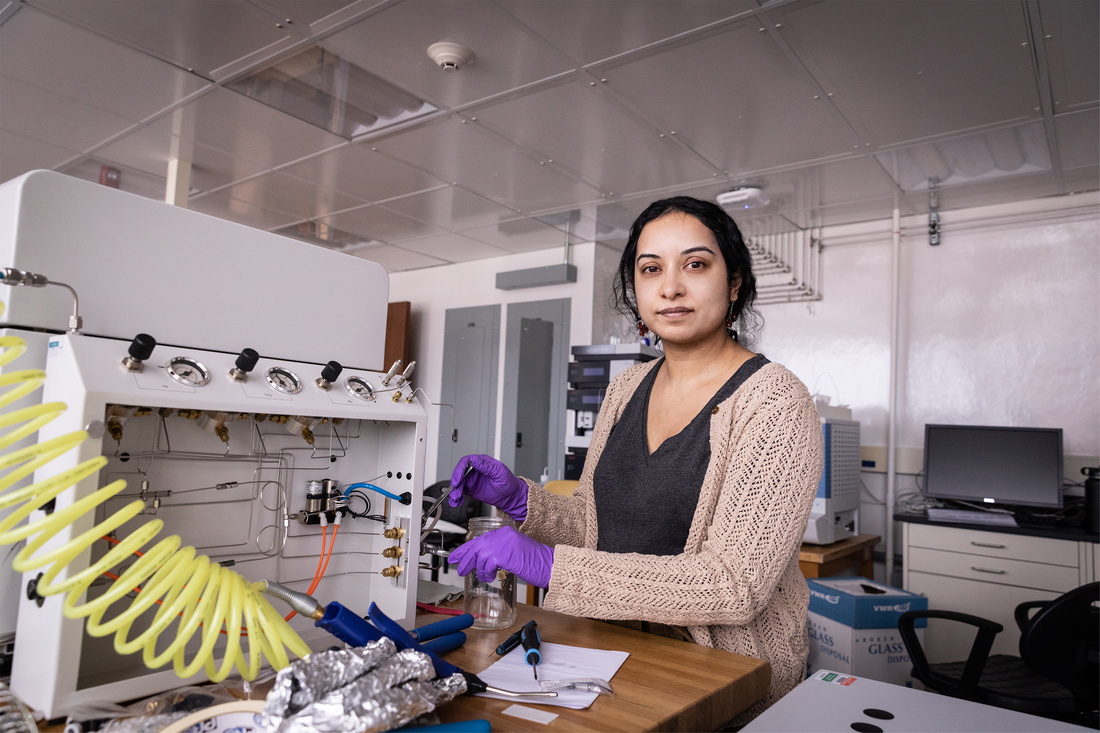
Tripti Bhattacharya, the Thonis Family Professor of Earth and Environmental Sciences, uses a gas chromatograph coupled to an isotope-ratio mass spectrometer to analyze ancient organic materials, giving her insights on past climates and changes in environmental conditions.
Tripti Bhattacharya loves history and literature, but her career took shape when she realized science could ignite her curiosity in the same way. During a soil science class in her first year at Georgetown University, she discovered not only that soil is intimately tied to the rise and fall of civilizations, but also that science could be creative, challenging and fun. “That class captured my imagination,” says Bhattacharya, the Thonis Family Professor of Earth and Environmental Sciences who joined Syracuse University’s College of Arts and Sciences faculty in 2018. “Thinking about the relationships between humans and the environment sent me down this road of doing research.”
What we’re learning is the rate at which the planet warms really matters. If we’re warming slowly in a steady way, the impacts are not as bad as what’s happening today, which is warming incredibly rapidly. How much we warm and how fast makes a difference for the world we see.
Professor Tripti Bhattacharya
Today the climate scientist is at the forefront of interdisciplinary research that combines explorations of past climates with atmospheric science. She employs geochemistry, climate modeling and data analysis, incorporating information from the isotopic signature of ancient molecules to reconstruct major climate events from thousands of years ago. By doing this, Bhattacharya can relate her findings to the present and what the future may hold. She cites the barrage of environmental catastrophes, such as wildfires in the Western U.S. and hurricanes like Ida in 2021, as evidence of the shifting climate. “Those types of extreme events, which we have a record for in the past, are likely to have some surprises in store for us if we don’t take climate change seriously and adapt,” she says.
Bhattacharya, who holds a Ph.D. in geography from the University of California, Berkeley, and worked as a postdoctoral research associate at University of Arizona, focuses in general on Mediterranean climate and is a leading expert on ancient monsoons. Her research has been featured in top scientific journals and was cited in three chapters of the 2021 UN Intergovernmental Panel on Climate Change Report. She was selected by the National Academies of Sciences, Engineering and Medicine to serve on a panel and make recommendations that will help shape National Science Foundation (NSF) funding for paleoclimate research. One theme that dominates Bhattacharya’s research is a desire to understand the dynamics of rainfall on a variety of timescales and the impact regionally. “Our climate models agree in large part about what will happen globally, but regionally there are a lot of disagreements,” she says. “Especially what rainfall will look like in the future.”
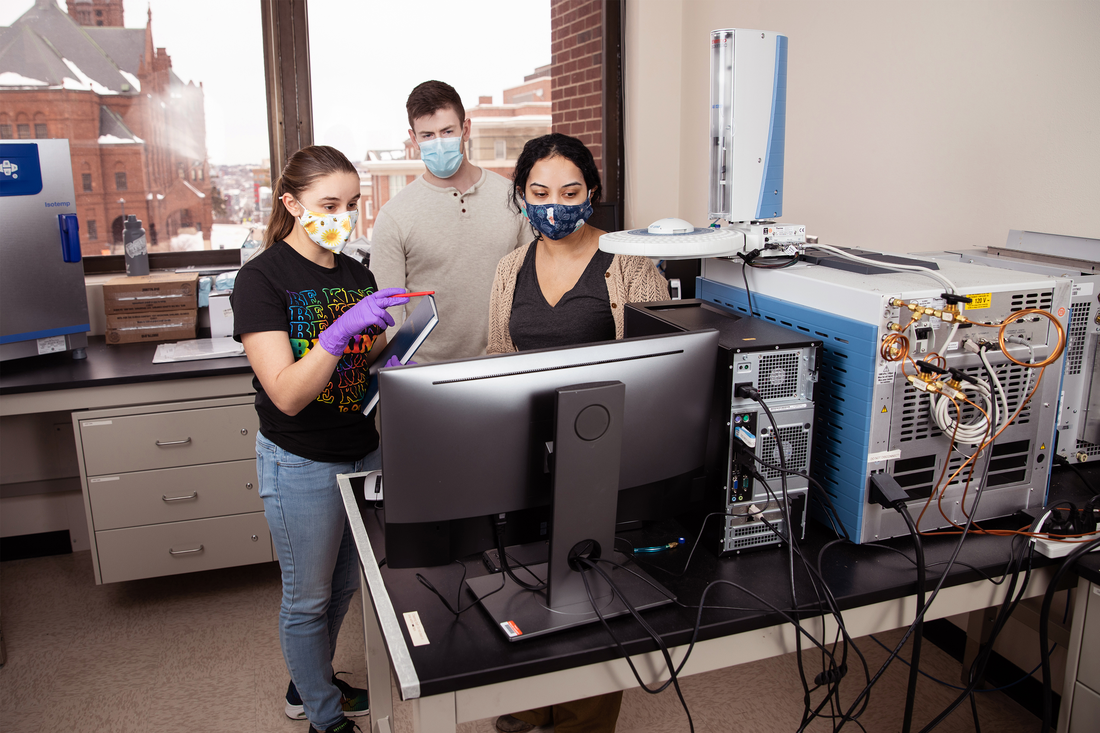
Bhattacharya, graduate student Heather Gunn (left) and doctoral candidate Peter Brennan (center) discuss climate modeling. For a recent research project, Bhattacharya and her team reproduced rainfall and temperature patterns from the Pliocene epoch, which helped them create more accurate model simulations for exploring climate change over time.
Exploring Prehistoric Patterns
One of Bhattacharya’s latest explorations led her to the Pliocene epoch (5.3 million to 2.5 million years ago), when atmospheric carbon dioxide levels were similar to today’s readings, though our current levels have surpassed those of the Pliocene. The major difference, she says, is Pliocene levels stretched over thousands of years compared to the mere decades of accelerated change driving today’s unprecedented global warming. “What we’re learning is the rate at which the planet warms really matters,” she says. “If we’re warming slowly in a steady way, the impacts are not as bad as what’s happening today, which is warming incredibly rapidly. How much we warm and how fast makes a difference for the world we see.”
Changing forest cover at high latitudes alters the jet stream and has impacts as far away as the tropics.
Professor Tripti Bhattacharya
Until recently, Bhattacharya says, it was challenging to reproduce Pliocene temperature and rainfall patterns for computer modeling simulations. However, her lab has succeeded in reconstructing those patterns by more accurately incorporating information on cloud cover and vegetation in climate models. One conundrum she’s investigating is how changes in low cloud cover in coastal areas can alter climates. These clouds help keep coastal regions, like the California coast, cool today. However, Bhattacharya’s lab is generating evidence that these regions heated up dramatically in the past as a result of the loss of this low cloud cover, impacting currents, fisheries, and rainfall, she says. “Clouds are notoriously hard to code in global models because they’re these tiny one-meter-by-one-meter scale phenomena. But because our ability to represent clouds has improved, we get a more accurate picture of both rainfall and temperature in key locations, helping us understand the past and predict the future.”
The Pliocene also offers an example of how changing landscapes can reshape global weather. During the Pliocene, the high northern latitudes—now characterized by tundra and ice—were covered by boreal forests, their dark cover absorbing sunlight and warming the atmosphere, Bhattacharya says. She reports on the research in Nature Communications. “Changing forest cover at high latitudes alters the jet stream and has impacts as far away as the tropics,” she says.
Such findings inspire Bhattacharya’s explorations and her research continues to garner accolades. This year, she was honored with an NSF CAREER award, a development program that supports early-career faculty with the potential to serve as role models in research and education. She was awarded a five-year grant totaling more than $793,000. Bhattacharya also received a Sloan Research Fellowship, which carries a two-year, $75,000 award to support her research. The annual fellowships recognize early-career scholars who “represent the most promising scientific researchers working today,” according to the Alfred P. Sloan Foundation.
Analyzing Ancient Organic Materials
In investigating the past to gain insights on the future, Bhattacharya is grateful for the enthusiastic support she’s received from University Life Trustee Michael G. Thonis ’72 and his wife, Susan, who established her professorship. The appointment laid the groundwork for her to develop her Paleoclimate Dynamics Lab. The lab made a big step forward when she leveraged some initial data findings and teamed up with Earth sciences colleague Christopher Junium to acquire a gas chromatograph coupled to an isotope-ratio mass spectrometer with an NSF grant.
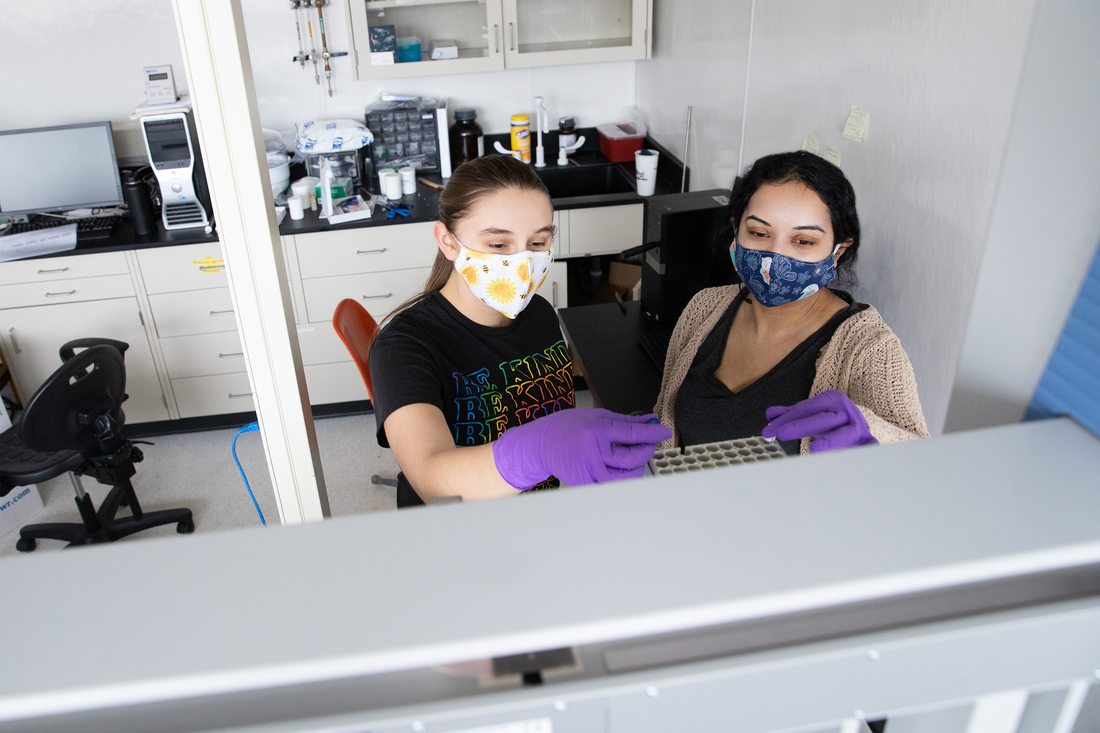
Bhattacharya (right) and Gunn work with samples in her Paleoclimate Dynamics Lab.
The instrument allows researchers to analyze organic materials, such as leaf waxes and amino acids, and determine atomic weights and isotopic ratios for hydrogen, carbon and nitrogen, which can shed light on changes in numerous environmental conditions. “We’re measuring these individual plant compounds from the Pliocene and other time intervals, and we’re finding that these tell us how rainy it was in the past,” she says. “We’re also finding these dramatic reorganizations of climate—places like South Africa and the Western U.S. looked really different in the Pliocene based on these measurements. Specifically, regions that today primarily get winter rainfall likely got a lot more summer rainfall. And that’s fascinating, because it is helping reveal new, surprising aspects of current climate change in these regions.”
Sparking Curiosity
For Bhattacharya, the possibilities of exploration and learning more about the world seem endless—and she wants to instill that sense of wonder and curiosity in her students, who fuel her own curiosity in the classroom and in the lab. “I think you should create an environment where students want to do well. Every class is a different flavor. My big intro class has a lot of non-science majors, and they ask questions or make connections to other fields that I never would have thought of,” says Bhattacharya, a 2021 recipient of the University’s Meredith Teaching Recognition Award. “I can also draw on the motivation and curiosity of my grad students and undergrad researchers, because they’re always excited about what they’re doing.”

